Medical Establishment Exhibit
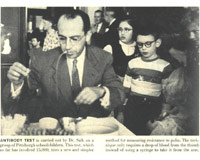
Jonas Salk (1914-1995)
Dr. Jonas Salk developed the first polio vaccine which was first tested in 1952 and made public in 1955. The vaccine was administered with a series of three to four injections to produce immunity to poliomyelitis. Salk's vaccine was tested on the school children of the United States in 1954 and produced an almost 70% prevention rate. However, during the first year of vaccination, almost 200 participants contracted the disease and 11 died due to the injected vaccine. It was soon discovered that these misfortunes were the result of a bad batch of the vaccine from one drug company. New restrictions were developed and successful vaccinations continued.
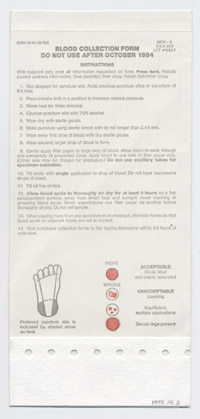
Robert Guthrie (1916-1995)
Dr. Robert Guthrie developed a phenylketonuria (PKU) screening test for newborn babies in the 1960's. PKU is a hereditary disease that causes severe brain damage and mental retardation. PKU can be treated, if detected in infancy, with a carefully controlled diet. Known as the "Father of Prevention," Guthrie's test simplified the process of drawing blood for screening. His test only required a simple prick of an infant's heel with the blood being placed on filter paper. The "Guthrie Test," as it was known, became mandatory in New York State in 1965.
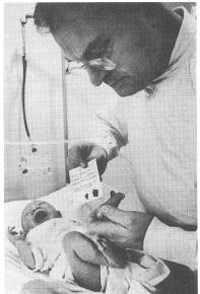
Robert Guthrie (1916-11995)
Dr. Robert Guthrie developed a phenylketonuria (PKU) screening test for newborn babies in the 1960's. PKU is a hereditary disease that causes severe brain damage and mental retardation. PKU can be treated, if detected in infancy, with a carefully controlled diet. Known as the "Father of Prevention," Guthrie's test simplified the process of drawing blood for screening. His test only required a simple prick of an infant's heel with the blood being placed on filter paper. The "Guthrie Test," as it was known, became mandatory in New York State in 1965.
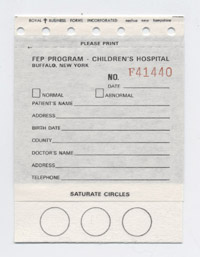
Robert Guthrie (1916-1995)
Dr. Robert Guthrie developed a phenylketonuria (PKU) screening test for newborn babies in the 1960's. PKU is a hereditary disease that causes severe brain damage and mental retardation. PKU can be treated, if detected in infancy, with a carefully controlled diet. Known as the "Father of Prevention," Guthrie's test simplified the process of drawing blood for screening. His test only required a simple prick of an infant's heel with the blood being placed on filter paper. The "Guthrie Test," as it was known, became mandatory in New York State in 1965.
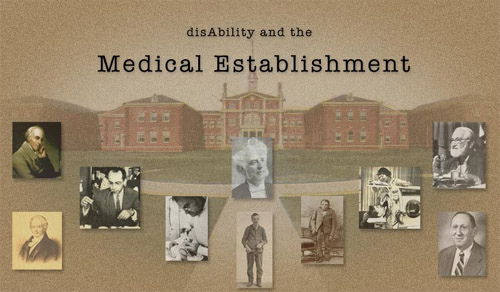
MedicalEstablishment_header
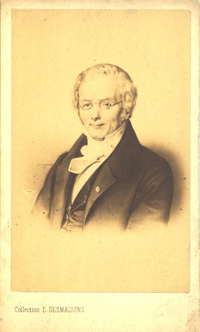
Jean Etienne Dominique Esquirol (1772-1840)
Jean Esquirol was one of the most important figures in French psychiatry during the first half of the 19th century. He was a student of Philippe Pinel and was his successor as the chief physician at the Salpetriere Hospital in Paris. In 1832, he was named the chief inspector at the University of Paris. Esquirol is credited with the first attempts to distinguish the differences between mental retardation and insanity. He devised a classification system based on the intellectual impairments of individuals and their speech.
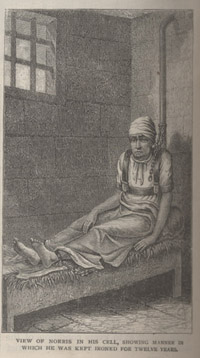
Norris in His Cell
Jean Esquirol was one of the most important figures in French psychiatry during the first half of the 19th century. He was a student of Philippe Pinel and was his successor as the chief physician at the Salpetriere Hospital in Paris. In 1832, he was named the chief inspector at the University of Paris. Esquirol is credited with the first attempts to distinguish the differences between mental retardation and insanity. He devised a classification system based on the intellectual impairments of individuals and their speech.
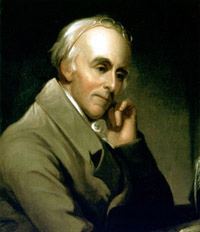
Dr. Benjamin Rush (1746-1813)
Known as the "Father of American Psychiatry," Benjamin Rush published the first textbook on psychiatry in America, Medical Inquires and Observations upon the Diseases of the Mind. Rush cared for the mentally ill during his years of service at the Pennsylvania Hospital of the Insane. He also signed the Declaration of Independence.
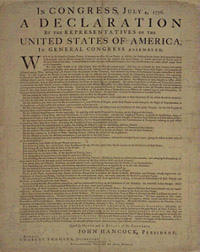
Declaration of Independence
Known as the "Father of American Psychiatry," Benjamin Rush published the first textbook on psychiatry in America, Medical Inquires and Observations upon the Diseases of the Mind. Rush cared for the mentally ill during his years of service at the Pennsylvania Hospital of the Insane. He also signed the Declaration of Independence.
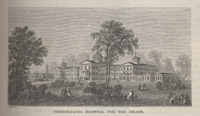
Pennsylvania Hospital of the Insane
Known as the "Father of American Psychiatry," Benjamin Rush published the first textbook on psychiatry in America, Medical Inquires and Observations upon the Diseases of the Mind. Rush cared for the mentally ill during his years of service at the Pennsylvania Hospital of the Insane. He also signed the Declaration of Independence.
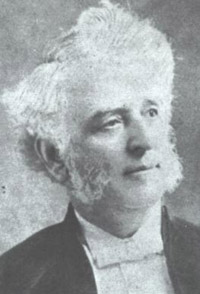
Jonathan Langdon Down (1828-1896)
Jonathan Langdon Down is best known for his study of a small group of children with similar physical and mental characteristics in 1866. When Down was the first medical superintendent at Earlswood Asylum, he devised the classification of "Mongolian Idiot," which later became Down's syndrome. His study would later lead to the discovery of an extra chromosome or the 21st chromosome. Down is also known for his ethnic classification of developmental disabilities. His paper "Observations of an Ethnic Classification of Idiots," discusses his belief in race oriented taxonomy.
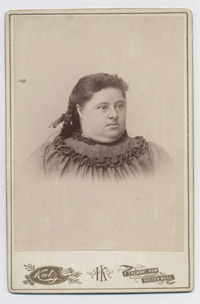
Boston Annie
Jonathan Langdon Down is best known for his study of a small group of children with similar physical and mental characteristics in 1866. When Down was the first medical superintendent at Earlswood Asylum, he devised the classification of "Mongolian Idiot," which later became Down's syndrome. His study would later lead to the discovery of an extra chromosome or the 21st chromosome. Down is also known for his ethnic classification of developmental disabilities. His paper "Observations of an Ethnic Classification of Idiots," discusses his belief in race oriented taxonomy.
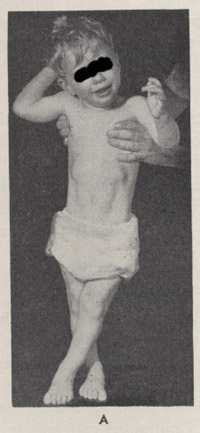
William Little (1810-1894)
William Little, an English surgeon, wrote the first medical descriptions of what is now known a cerebral palsy. Originally cerebral palsy was called Little's Disease due to William Little's description in an 1861 paper. Little believed that the condition was due to a lack of oxygen during birth. Little's Disease is now known as spastic diplegia, a form of cerebral palsy.
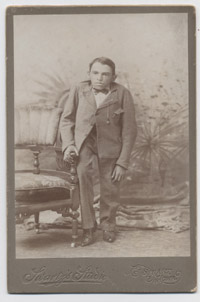
Roy Moore
William Little, an English surgeon, wrote the first medical descriptions of what is now known a cerebral palsy. Originally cerebral palsy was called Little's Disease due to William Little's description in an 1861 paper. Little believed that the condition was due to a lack of oxygen during birth. Little's Disease is now known as spastic diplegia, a form of cerebral palsy.
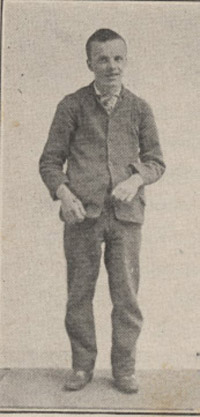
Martin W. Barr (1860-1938)
Martin W. Barr served as Chief Physician and later Superintendent of the Elwyn School in Pennsylvania. Barr was at Elwyn for 37 years until he retired in 1930. He also served as the president for the American Association for the Study of Feebleness. Barr published Mental Defectives, their History, Treatment, and Training in 1904 and Types of Mental Defectives in 1920. These images are from Martin Barr's classification system in his book Types of Mental Defectives.
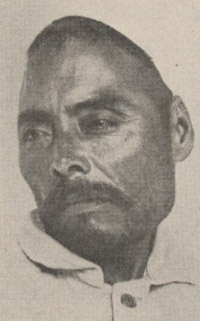
Martin W. Barr (1860-1938)
Martin W. Barr served as Chief Physician and later Superintendent of the Elwyn School in Pennsylvania. Barr was at Elwyn for 37 years until he retired in 1930. He also served as the president for the American Association for the Study of Feebleness. Barr published Mental Defectives, their History, Treatment, and Training in 1904 and Types of Mental Defectives in 1920. These images are from Martin Barr's classification system in his book Types of Mental Defectives.
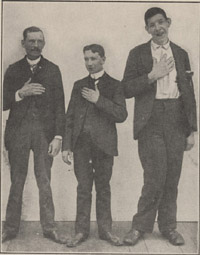
Martin W. Barr (1860-1938)
Martin W. Barr served as Chief Physician and later Superintendent of the Elwyn School in Pennsylvania. Barr was at Elwyn for 37 years until he retired in 1930. He also served as the president for the American Association for the Study of Feebleness. Barr published Mental Defectives, their History, Treatment, and Training in 1904 and Types of Mental Defectives in 1920. These images are from Martin Barr's classification system in his book Types of Mental Defectives.

Martin W. Barr (1860-1938)
Martin W. Barr served as Chief Physician and later Superintendent of the Elwyn School in Pennsylvania. Barr was at Elwyn for 37 years until he retired in 1930. He also served as the president for the American Association for the Study of Feebleness. Barr published Mental Defectives, their History, Treatment, and Training in 1904 and Types of Mental Defectives in 1920. These images are from Martin Barr's classification system in his book Types of Mental Defectives.
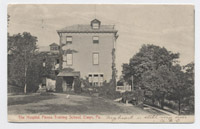
Martin W. Barr (1860-1938)
Martin W. Barr served as Chief Physician and later Superintendent of the Elwyn School in Pennsylvania. Barr was at Elwyn for 37 years until he retired in 1930. He also served as the president for the American Association for the Study of Feebleness. Barr published Mental Defectives, their History, Treatment, and Training in 1904 and Types of Mental Defectives in 1920. These images are from Martin Barr's classification system in his book Types of Mental Defectives.

Martin W. Barr (1860-1938)
Martin W. Barr served as Chief Physician and later Superintendent of the Elwyn School in Pennsylvania. Barr was at Elwyn for 37 years until he retired in 1930. He also served as the president for the American Association for the Study of Feebleness. Barr published Mental Defectives, their History, Treatment, and Training in 1904 and Types of Mental Defectives in 1920. These images are from Martin Barr's classification system in his book Types of Mental Defectives.
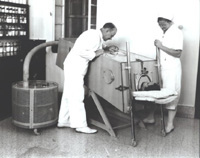
Philip Drinker (1894-1972)
As a medical researcher at Harvard, Philip Drinker, along with Louis Agassiz Shaw, invented the Iron Lung in 1927. The Iron Lung was used primarily for polio patients who could not breathe on their own. Artificial respiration provided by the Iron Lung was produced by a push and pull motion on the chest of a patient.
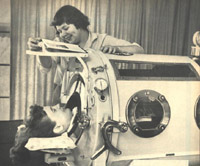
Philip Drinker (1894-1972)
As a medical researcher at Harvard, Philip Drinker, along with Louis Agassiz Shaw, invented the Iron Lung in 1927. The Iron Lung was used primarily for polio patients who could not breathe on their own. Artificial respiration provided by the Iron Lung was produced by a push and pull motion on the chest of a patient.
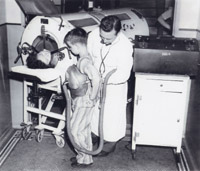
Philip Drinker (1894-1972)
As a medical researcher at Harvard, Philip Drinker, along with Louis Agassiz Shaw, invented the Iron Lung in 1927. The Iron Lung was used primarily for polio patients who could not breathe on their own. Artificial respiration provided by the Iron Lung was produced by a push and pull motion on the chest of a patient.
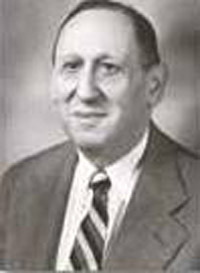
Leo Kanner (1894-1981)
Dr. Leo Kanner was the first to describe autism as a specific condition in a 1943 paper titled "Autistic Disturbances of Affective Contact." He also developed the first child psychiatry services in a pediatric hospital at Johns Hopkins Hospital in Baltimore, Maryland. Kanner was the first doctor of medicine to be recognized as a child psychiatrist. His textbook Child Psychiatry, published in 1935, was the first printed in the English language.
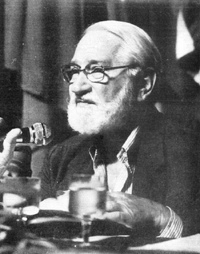
Albert Sabin (1906-1993)
Dr. Albert Sabin is best known for developing the incredibly successful oral vaccine for polio. In 1961, the United States Public Health Service approved his vaccine that protected against both infection and paralysis from poliomyelitis. Compared to Jonas Salk's vaccine that was injected and had produced complications, Sabin's vaccine was easier to distribute, safer, and provided longer immunity to the disease.
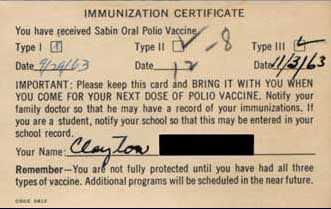
Immunization Certificate
Dr. Albert Sabin is best known for developing the incredibly successful oral vaccine for polio. In 1961, the United States Public Health Service approved his vaccine that protected against both infection and paralysis from poliomyelitis. Compared to Jonas Salk's vaccine that was injected and had produced complications, Sabin's vaccine was easier to distribute, safer, and provided longer immunity to the disease.

